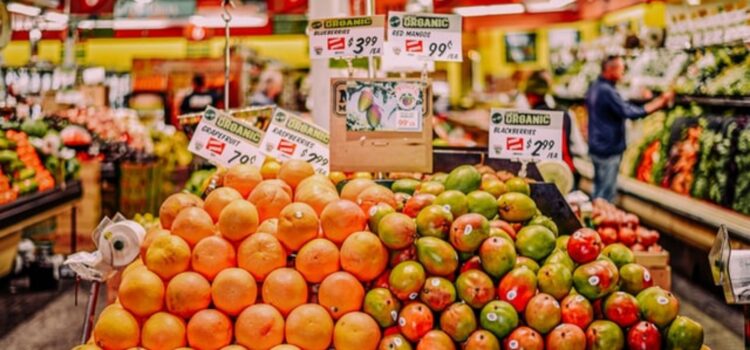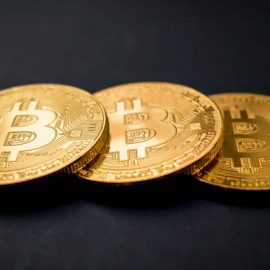

This article is an excerpt from the Shortform book guide to "How the World Really Works" by Vaclav Smil. Shortform has the world's best summaries and analyses of books you should be reading.
Like this article? Sign up for a free trial here.
How is food produced? How has food production changed over time? Can we reduce our reliance on fossil fuels to produce food?
Vaclav Smil says that modern methods of food production have improved the quality of life for millions. But, it comes at the cost of burning huge quantities of fossil fuels. He discusses the history of food production as well as the role fossil fuels play in producing the food we eat.
Keep reading to learn how food production works.
The History of Food Production
Smil discusses how food is produced, explaining that food production was inefficient and unreliable prior to the industrial age. So, everyone but the wealthiest elites had to worry about getting enough to eat. Since the 1800s, food production has been driven primarily by fossil fuels and electricity. Fossil fuels are used to power agricultural machinery, fertilize and irrigate crops, heat greenhouses, and transport harvests. As a result of these processes, crop yields have increased exponentially, and even though the world’s population has exploded in recent decades, the share of the population who is undernourished has decreased by 50%.
(Shortform note: The amount of fossil fuels required to produce food—and the amount of greenhouse gas emissions caused by food production—varies depending on the type of food. Beef production is the largest contributor to greenhouse gas emissions, resulting in 25% of all emissions from food production. This is followed by cow milk, pork, and chicken. Among plant foods, rice farming results in the highest emissions (due to methane-producing bacteria in flooded rice paddies), followed by wheat, sugarcane, and maize.)
The Role of Fossil Fuels in Fertilizers and Other Agrochemicals
Smil points out that the amount of fossil fuels required to produce agrochemicals is far greater than the amount required to make and power farm machinery. Agrochemicals include fungicides, insecticides, and fertilizers. Of these, the chemical needed in the greatest quantities is nitrogen, which is essential to plant growth. In the past, farmers supplied crops with nitrogen by applying human wastes directly to the crops or by rotating crops that naturally produce nitrogen (such as beans and peas) with crops that don’t. Now, nitrogen is produced using fossil fuel: It takes 1.5 liters of diesel fuel to make one kilogram of nitrogenous fertilizer.
(Shortform note: In addition to requiring fossil fuel for their production, nitrogen fertilizers also emit nitrous oxide, or “laughing gas,” a greenhouse gas 300 times more potent than carbon dioxide. Over the past 40 years, emissions of nitrous oxide have increased by more than 30%. One study found that these emissions can be reduced by increasing the efficiency of nitrogen use, such as by implementing technology that enables more precise application of fertilizers.)
The Role of Fossil Fuels in Fishing
Fishing uses more energy than any other form of food provision. Smil points out that aquaculture (fish farms) can make a dent in overfishing, but it doesn’t solve the fossil fuels problem, as the most popular fish species are carnivores that need to be fed large quantities of other, wild-caught fish.
(Shortform note: Fishing relies on fossil fuels primarily to power the engines and pull the nets of massive vessels called supertrawlers, which drag huge, weighted nets across the sea floor to catch fish. This fishing technique contributes to carbon emissions not only by burning fuel but also by destroying seabed sediments and marine plants such as seagrass that are extremely effective at storing carbon. In fact, a 2021 study found that bottom trawling alone releases as much carbon dioxide as the entire aviation industry.)
The Role of Fossil Fuels in Activities Incidental to Food Production
While field farming, fishing, and aquaculture account for only about 4% of annual global energy use, total food-related energy use is close to 20%. Smil explains that this includes everything from food processing to packaging and transportation. This number has increased in recent years due to factors such as growing reliance on prepared foods and food imports.
(Shortform note: Studies show exactly what percentage of greenhouse gas emissions are caused by each food production-related activity. Of the approximately 26% of global emissions caused by food production, livestock and fisheries account for 31% of emissions, crop production accounts for 27%, land use (destruction of forests, grasslands, and other carbon sinks to create cropland or pasture) accounts for 24%, and supply chain accounts for 18%, of which transport is the highest contributor, at 6%.)
How to Reduce Our Dependence on Fossil Fuels in Food Production
Smil argues that it would be almost impossible to return to pre-industrial methods of food production without most people leaving the cities and spending a good portion of their time growing their own food and tending their own animals in the country. However, he says that it’s possible to reduce our modern dependence on fossil fuels in food production. He suggests three methods for doing so: Cutting down on food waste, eating less meat, and using electricity to power agricultural machinery.
Cut Down on Food Waste
One way to reduce our dependence on fossil fuels in food production is to waste less food. Smil says we produce much more food than we need; as a result, we waste a third of our total food supply. When it comes to household waste, most of it is food that was served but not eaten or food that went bad. Smil argues that we should price food differently to prevent food waste.
(Shortform note: Smil notes that reducing food waste throughout the food production process is a complex problem that has yet to be solved. However, he doesn’t mention the efforts that have been made to solve this problem. For example, many states have passed laws to reduce food waste. Five states have passed laws banning entities from sending their food waste to landfills. All 50 states have laws that protect businesses that donate leftover food from liability relating to the condition of the food. And in 2022, California passed a law requiring the collection and recycling of food waste from all businesses and residents. The collected waste is processed to become compost, clean electricity, or biofuel.)
Eat Less Meat
Another way to reduce our dependence on fossil fuels in food production is to eat less meat. While Smil doesn’t think it’s realistic for most people to become vegetarian or vegan, he does believe that we can eat significantly less meat and still get the proper amount of protein in our diets. In particular, he thinks we should reduce our consumption of beef, as cattle have a particularly damaging effect on the environment.
(Shortform note: Meat contributes to climate change in two main ways: through cows’ emission of the greenhouse gas methane, and through the destruction of carbon-capturing forests to create grazing land and cropland for cattle. For example, the Amazon rainforest has long absorbed huge amounts of carbon from the atmosphere—by some estimates, 1.5 billion tons a year, or 4% of all emissions from fossil fuels. However, due to deforestation and burning to accommodate cattle ranching, the Brazilian portion of the Amazon now emits 3.6 billion more tons of carbon than it sequesters. According to the UN, meat production is responsible for generating about 14.5% of global greenhouse gas emissions.)
Use Electricity to Power Agricultural Machinery
Another method of reducing fossil fuel use in food production is to power agricultural machinery with electricity. Smil says this is not currently feasible because it depends on inexpensive methods of generating and storing large amounts of electricity, which don’t exist yet.
(Shortform note: According to industry watchers, farms are in fact increasingly turning to electric equipment due to electricity’s greater efficiency, environmental concerns resulting in regulatory pressures, and labor shortages. Equipment that can be powered by electricity includes irrigation pumping systems, water heaters, and tractors. Some say that the biggest obstacle to converting to electric equipment isn’t the technology, but the cost. They argue that with incentives to increase technology development and offset costs to farmers will come more sophisticated technology.)

———End of Preview———
Like what you just read? Read the rest of the world's best book summary and analysis of Vaclav Smil's "How the World Really Works" at Shortform.
Here's what you'll find in our full How the World Really Works summary:
- How modern-day life relies heavily on fossil fuels for nearly everything
- Why liberals and conservatives need to better understand how the world works
- Why it's nearly impossible to meet current IPCC limits on global warming






